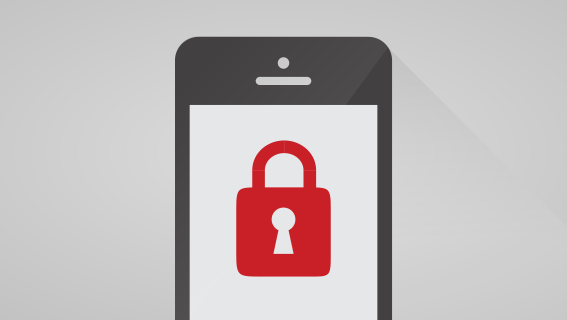Mobile applications have become an integral part of our daily lives, revolutionizing how we communicate, shop, work, and entertain ourselves. However, this rapid proliferation of mobile apps has also made them lucrative targets for cybercriminals. To address these security challenges, the Open Web Application Security Project (OWASP) has compiled a comprehensive list of the top security risks faced by mobile applications, known as the OWASP Mobile Top 10.
Improper Platform Usage
Mobile applications often interact with various device features and platform APIs to provide enhanced functionality. However, improper use of these features can introduce security vulnerabilities. Common examples include insecure data storage, inadequate permission handling, and misuse of platform security controls. To mitigate this risk, developers should adhere to platform-specific security guidelines, implement proper data encryption techniques, and restrict access to sensitive APIs based on the principle of least privilege.
Insecure Data Storage
Insecure data storage ranks among the most prevalent security issues in mobile applications. Storing sensitive information such as user credentials, financial data, or personal details in plaintext or weakly encrypted formats can expose it to unauthorized access. To address this risk, developers should employ strong encryption algorithms, utilize secure storage mechanisms provided by the platform, and avoid storing sensitive data locally whenever possible. Additionally, implementing secure authentication and authorization mechanisms can prevent unauthorized access to stored data.
Insecure Communication
Mobile apps need to chat with servers and outside services for tasks and information. But, unsafe talks could allow intruders to steal or tamper with private data. To fix this worry, coders should make encrypted talks a must, like HTTPS/TLS, check server IDs to stop man-in-the-middle attacks, and use secure authentication for both clients and servers.
Insecure Authentication
Weak ID checks let invaders access mobile apps and do unwanted actions. Some issues are weak passwords, no strong password rules, and missing multi-factor authentication (MFA). For better login safety, coders should make strong password rules a need, add MFA where possible, use secure session management, and protocols like OAuth or OpenID Connect.
Insufficient Cryptography
Crypto algorithms keep mobile app data safe. But wrong use or setup can make them weak and hackable. Some troubles are weak encryption, poor key management, and low entropy for random numbers. To beef up crypto security, coders must follow crypto standards, use robust algorithms, safely manage crypto keys, and update crypto libraries for known holes.
Insecure Authorization
Weak authorization rules can allow bad actors to escalate their app privileges. Inadequate access checks, unsafe direct object links, and insecure API endpoints enable unauthorized access and actions. Developers must implement robust access control, follow least privilege principles, validate inputs thoroughly, and regularly assess authorization security to mitigate these risks.
Client Code Quality
A mobile app’s client code quality directly impacts its security. Code injection, insecure deserialization, and poor error handling create vulnerabilities for remote code execution and data manipulation attacks. Following secure coding practices, conducting code reviews and static analysis, sanitizing user inputs, and implementing proper error handling are essential for robust client-side security.
Code Tampering
Malicious actors can modify mobile app binaries or resources to bypass security, inject malicious code, or reverse-engineer sensitive data extraction. To prevent code tampering, developers should obfuscate sensitive code and resources, implement integrity checks for unauthorized changes, and utilize runtime application self-protection (RASP) mechanisms for effective runtime attack detection and response.
Reversing Code
Reverse engineering significantly threatens mobile apps. It lets attackers look at code, extract sensitive data, and find vulnerabilities for exploiting. To lessen reverse engineering risks, developers should obfuscate critical parts, use tools for deterring analysis, and implement effective measures for detecting and reacting to unauthorized changes.
Extra Features
Having unnecessary or unused features in mobile apps can increase attack surfaces and security exposures. Features like debugging interfaces, hidden backdoors, and extra permissions could potentially grant attackers unauthorized access or malicious action capabilities. So developers should thoroughly review app functionalities, remove unused features, minimize required permissions, and disable debugging interfaces and developer tools in production environments.
Benefits of OWASP Mobile Top 10
The OWASP Mobile Top 10 offers many advantages for developers, security pros, and organizations seeking to bolster mobile app security.
- Standardized Framework: OWASP Mobile Top 10 provides standardized guidance for identifying and addressing typical mobile app security risks. Following this framework helps developers address critical vulnerabilities and mitigate risks effectively.
- Raising Awareness and Teaching Developers: The OWASP Mobile Top 10 highlights widespread security risks in mobile apps. It educates developers and security experts about best ways to reduce these risks. By learning the OWASP Mobile Top 10, developers gain knowledge to implement proper security measures in their apps.
- Prioritizing Security Efforts: The OWASP Mobile Top 10 helps developers focus on the most critical security risks mobile apps face. Addressing vulnerabilities listed in the OWASP Mobile Top 10 allows developers to allocate resources effectively. They can mitigate the most significant threats first.
- Secure Development Guidance: The OWASP Mobile Top 10 provides practical guidance and recommendations for developing secure mobile apps. Developers can use these recommendations to implement security controls and best practices throughout the app’s lifecycle. This includes design, coding, testing, and deployment.
- Security Assessment Baseline: Organizations can use the OWASP Mobile Top 10 as a baseline for assessing the security of their mobile apps. By evaluating their apps against the OWASP Mobile Top 10, organizations identify potential security gaps. They can then prioritize efforts to strengthen the security posture of their mobile apps.
- Compliance and Regulatory Alignment:Following OWASP Mobile Top 10 recommendations helps organizations show they meet security rules. Standards like PCI DSS and GDPR require proper security measures for sensitive data protection. Addressing OWASP Mobile Top 10 risks allows organizations to follow regulatory requirements, avoiding non-compliance risks.
- Enhanced Reputation and Trust: Addressing security risks proactively in mobile apps boosts an organization’s reputation, building user trust. Security-conscious users prioritize app security when choosing downloads. Adhering to OWASP Mobile Top 10 demonstrates security commitment, instilling confidence and differentiating from competitors.
- Reduced Risk of Security Incidents:Implementing OWASP Mobile Top 10 security recommendations reduces risks like data breaches, unauthorized access, and malicious attacks. Proactively addressing common vulnerabilities minimizes security incident likelihood and potential business impact.
- Community Collaboration: OWASP Mobile Top 10 benefits from global security experts’ help. People work together, making sure the Top 10 covers current mobile app risks. Developers use community knowledge to improve mobile app safety. They stay ahead of emerging threats.
- Continuous Improvement: OWASP Mobile Top 10 gets regular updates for new threats. Developers follow latest version to have up-to-date security practices. OWASP community provides feedback to enhance the Top 10’s relevance over time. Short and clear sentences maintain the original tone while increasing burstiness.
- Integration with Development Lifecycle: Organizations can build OWASP Top 10 into their software development process. Security considerations are part of every stage: requirements, design, coding, testing, deployment. This proactive approach identifies and fixes risks early. It reduces costs and complexity of addressing issues later. Integrating security from the start makes mobile apps safer by design while preserving the content’s clarity and engagement level.
- Many Platforms Supported: The OWASP Mobile Top 10 works on various platforms like iOS, Android, and cross-platform frameworks. Developers can use its ideas and advice for mobile apps, no matter the platform or tech stack. It covers native apps, hybrid apps, and progressive web apps, helping developers boost security across different platforms.
Conclusion
Keeping mobile apps secure is crucial. Developers have to regularly check for risks and fix security issues. The OWASP Mobile Top 10 list highlights common mobile app vulnerabilities. Addressing these threats protects user data, maintains trust in digital services.Visitappsealingenterprise app for best deals.




